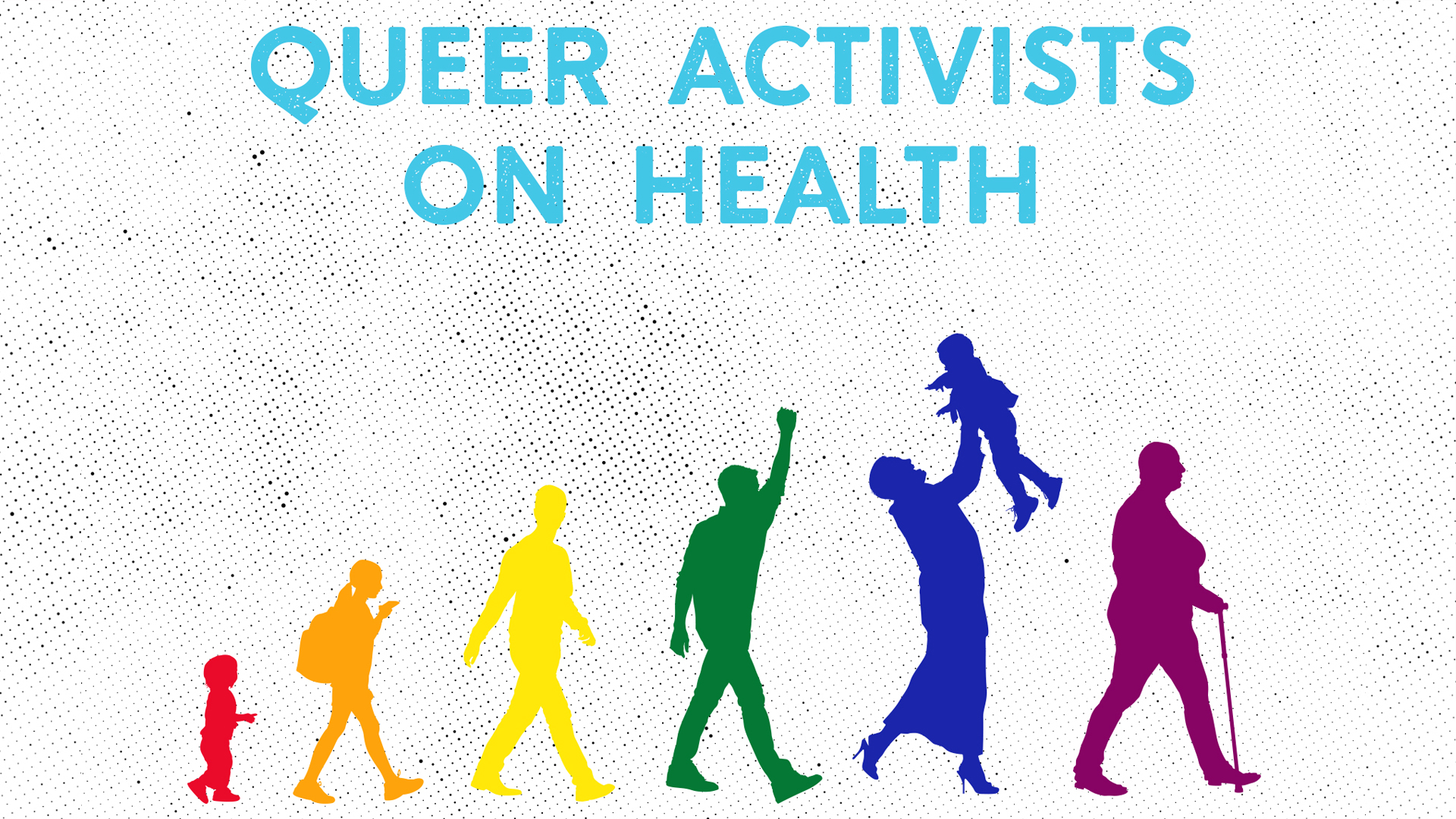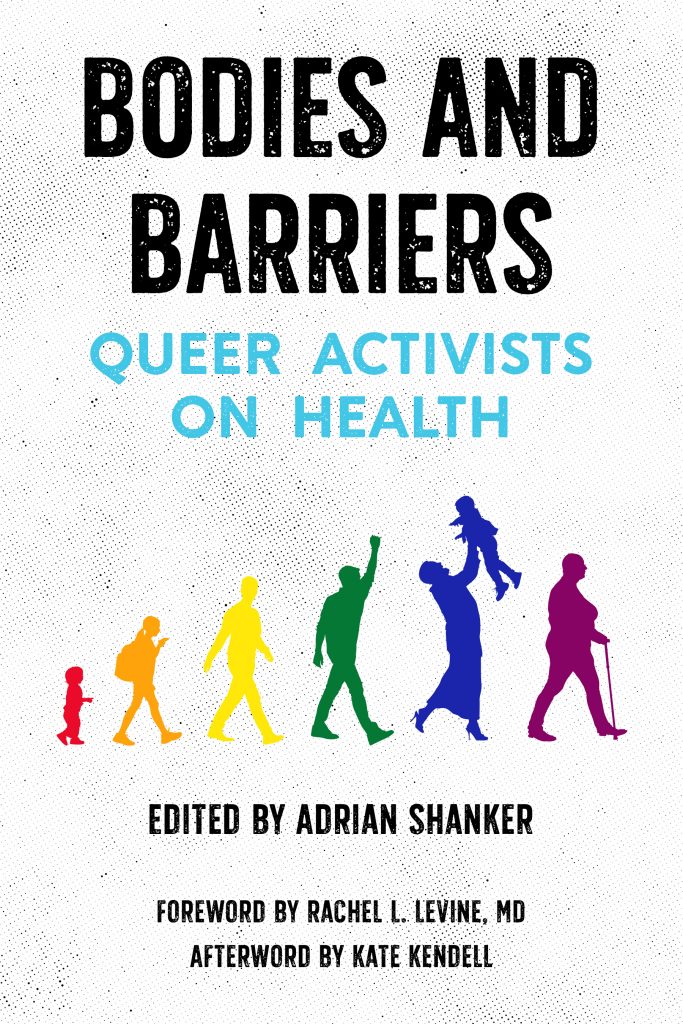By Andrew J. Peters
Out in Print: Queer Book Reviews
February 17th, 2020
Given the progress we’ve made toward LGBTQ+ equality, and the growth of queer visibility in mainstream politics and culture in the new millennium, surely our communities are enjoying a better quality of life, aren’t they?
AIDS prevention and treatment has reversed the rise of annual new HIV infections among gay and bisexual men. Transgender people, who once were served by a handful of providers in San Francisco or New York City, have access to trans-specific services in many areas of the country. Hospitals are implementing culturally competent practices and policies to earn coveted rankings in the Human Rights Campaign’s Healthcare Equality Index. State laws have made harmful, coercive conversion therapies an ugly relic of the past.
That ought to have benefited our overall health and wellness, right?
The answer from queer educators on the front lines is new contexts have created new challenges, and many of the historical disparities within our communities are still in high need of amelioration, impacting transgender and rural and older and brown-skinned and HIV+ people. If you believe health care is a fundamental human right, which the authors of Bodies and Barriers rightfully argue that you should, we still have much to overcome in order to realize queer social justice. As black feminist civil rights leader Fannie Lou Hamer put it: “Nobody’s free until everyone’s free.”
I worked and occasionally researched and published on queer health issues for close to three decades, so I can say it’s always been up to us as queer people to study, document, write about, advocate, and create programs that respond to unserved needs in queer communities. The authors in Shanker’s collection of scholarly articles stand on the shoulders of pioneers like social worker Dr. Joyce Hunter and pediatrician Dr. Gary Remafedi whose research in the 1980s brought to light the terrifyingly vulnerable status of LGBTQ+ teenagers and established the first standards of care, just to name a few.
Thus, as a textbook on queer health written by queer researchers and professionals in the field, Bodies and Barriers is not new or unique in its approach. In fact, in positioning the collection as an effort to uplift queer activism, the editor and foreword author’s lack of regard for historical context is a missed opportunity that would have made an even stronger case for the necessity of marginalized communities to agitate and organize for change. Where would we be without the bravery of trans activists Jamison Greene and Leslie Feinberg, lesbian feminist Jackie Winnow, who used her personal battle with breast cancer to fight for lesbian-welcoming cancer care, Marsha Johnson who co-founded the Sylvia Rivera Project to protect and advocate for transgender people of color, and Larry Kramer and ACT-UP’s urgent social action in the early years of the AIDS crisis?
Still, what gives Bodies and Barriers exciting impact is the upfront self-identification of the authors, particularly those who share their personal experiences navigating health care as a queer person. Within the staid norms of academic research and publishing, that’s actually quite revolutionary. Shanker’s volume makes a convincing case that authorship matters in health scholarship. If you want to understand what’s going on in our communities as a health care provider, you need to check your privilege and listen to your patients’ voices and experiences.
The topics covered are comprehensive and grouped across the lifespan. Katharine Dalke, an intersex physician, speaks to the history of doctors making decisions about intersex bodies without considering the child and parents’ wishes and the power of intersex people organizing to create better, patient-centered practices. Transgender advocate Preston Heldibridle writes passionately about the lifesaving practice of binding for transmasculine and nonbinary people. Genderqueer public health researcher Kate Luxion discusses ongoing discrimination against LGBTQ+ patients in the area of family planning.
Throughout, the authors talk about the impact of encounters with health care providers, both good and bad. In writing about a public health campaign to educate men-who-have-sex-with-men about anal health, Shanker raises the need for greater “cultural humility” among non-queer primary physicians, an idea that surely resonates with many of us who have sat in examination rooms, withholding the realities of our sexual lives for fear of judgment.
On the other hand, parent advocate Alisa Bowman shares how profoundly her transgender son’s life changed when she found an LGBTQ health clinic for his care, and from the waiting room to the exam and consultation with physicians, her whole family felt welcomed and accepted.
The queer umbrella encompasses so many social locations, it would be impossible to include every one of our experiences in one text. But Shanker does quite well covering that landscape with articles that address geography (the ongoing challenges of isolation and stigma for rural lesbians), aging populations (how do we address caretaking for older LGBTQs lacking family support and outliving their chosen families?), and bisexuals and their mental health and reproductive health needs. Furthermore, there are articles that illuminate both the challenges and opportunities in our increasingly digital culture, such as Jackson Harrison-Quintana’s “Sex and safety in a digital age.”
This is a collection that will be validating to many queer readers and helpful and thought-provoking for all health care professionals.







